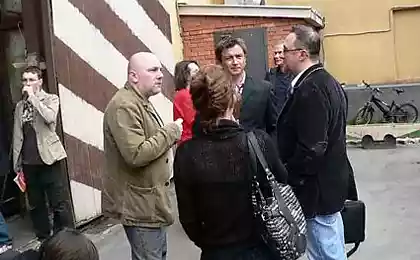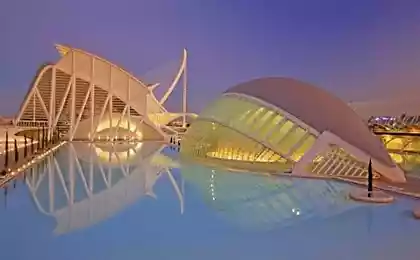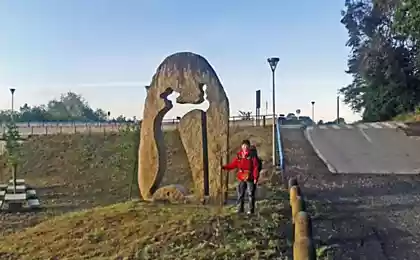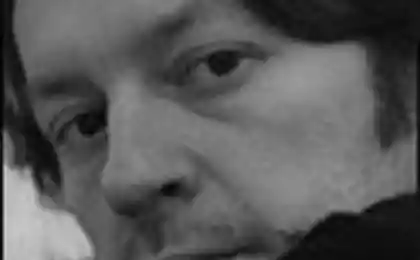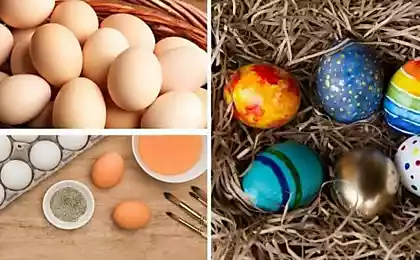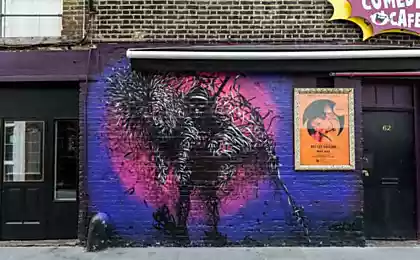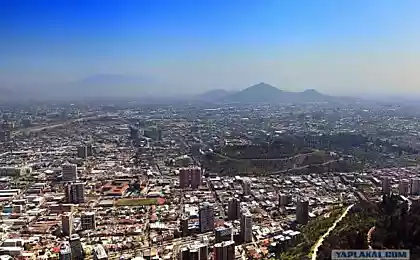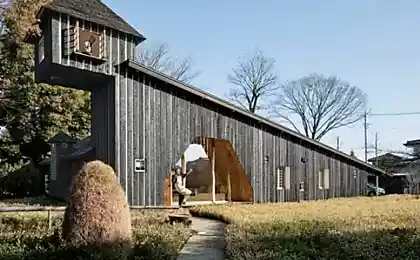570
Imperfection is welcome — the architect Santiago Calatrava about the paradoxes of beauty

The rock star of contemporary Spanish architecture Santiago Calatrava creates a building in the style of bio-tech. Its museums, skyscrapers, train stations and the house is always white as shells, and move like birds and insects. T&P talked to the architect about how the building proportions should be related to human than helpful dream at the place of future development and why the defects are as important as the dignity. — Why your buildings are always white?
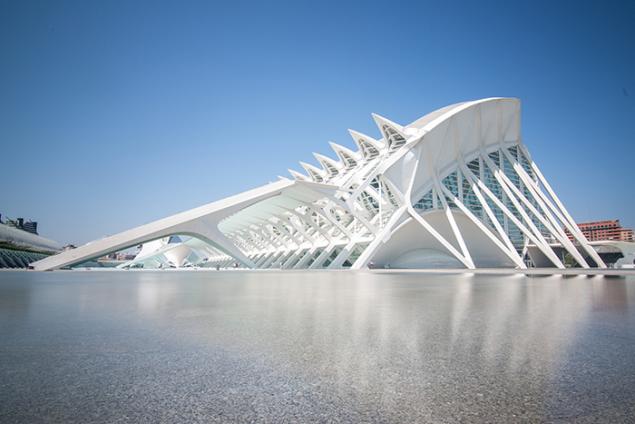
City of Arts and Sciences, Valencia
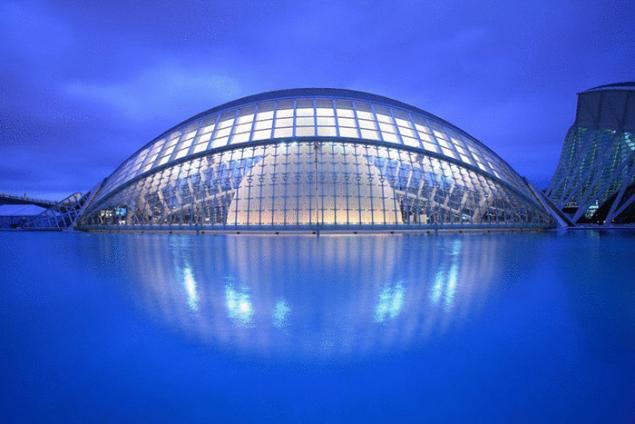
City of Arts and Sciences, Valencia
— In Rio de Janeiro built the Museum of tomorrow, created by your project. How's it going?
— We plan to finish construction in mid-2015. The Museum of tomorrow belongs to the new generation: is the organization a different profile compared to what we have always understood the word "Museum". It builds Prefecture, in cooperation with the Fondazione Roberto Marinho, who for many years engaged in education. They take educational television programs to reach the most remote villages in the Brazilian Mato Grosso and Amazon and print books. The Museum of tomorrow can be like that: it will raise questions, not answer them, as do traditional museums. Who are we? Where did we come from? Where are we going? This is a classic questions. Why the universe is like this? How it was created? Why Rio de Janeiro is where it is? Many of these issues relate to environmental problems. So the Museum is largely focused on environmental issues.
— This building looks like a pen, but moves like an insect. Why is it shaped like that?
— On the hill near the Museum is the convent of San Benito, or San Bento. This is the first building in South America, which was included into the world cultural heritage list of UNESCO. It is unusual, especially from the inside. But são Bento is located at an altitude of only 20-30 meters above sea level, so that our building should be very low so as not to obscure the view of it from the sea.
We suggested that the road around the Museum itself was a lecture. People don't even have to go inside to learn something, although the Museum is very affordable. Specially selected plants in the garden along the walls will tell you about the local flora. Next there is a chain of pools with a sandy bottom that filter and purify the water naturally. Sea water from the Bay pokachivaetsya to the Museum and slowly passes through them; when the cycle is about to end and she again falls into the sea, it is clean. Such a lesson is taught through observation.
The building had to be low and long, but have a symbolic significance. It stands out, to attract people, but when they come closer, you see that in its form is something vegetable. Something from the world of branches and fruits. But at the same time, there is mobility: movable parts that support the solar cells so that the entire building was Autonomous from the point of view of electricity. They are guided by the sun, describing a semicircle, as it does the light itself, and follow him, in order to optimize the amount of light that gets to the Museum.
White is the sum of many colors. If you know how to construct a rainbow, you will understand that it is formed of all the basic colors. I am very sympathetic to him, though, and have constructed buildings using other colors: wine red, black anthracite and the natural color of materials such as aluminum and stainless steel. But the white color is like light of the sun.
— What do you do first when starting a new project?
— I think there are two important things that have nothing to do with the program. The first is the context. You need to go to the place where the building will be built, and soak up the context. To be there for many hours watching him, to sit or even sleep — all this enables the place to merge with man, and man to become aware of all its features: what is near and what is far away, which means this place is what surrounds it landscape look like mountains on the horizon, or shore of the river. It's called the genius loci — the genius of the place. But I think that each place features a kind.
The second thing that is also important is to listen. To listen to people who are familiar with the venue, or client who is familiar with the problem. And work with it together to understand exactly what he seeks and what he wants.
"The architect must be a conductor. The conductor must not only convey to the musicians spirit of the score, but to ask of each the best that he is able"
— You listen to music at work?
— I listen to music always when I can, but I prefer to work in silence. I worked for many years with the music, and found that I regret it, because then I didn't listen with absolute attention. Now if I hear music, I only want to hear it. Usually it's classical music: a long list, from the solo for piano, violin, flute, harp, and other instruments to compositions for orchestras. From Bach and Vivaldi to Shostakovich and contemporary composers.
— Why did you choose architecture?
— I originally wanted to become an artist. But on the other hand, I was interested in the other lovely things: mathematics, physics and history of art. I spent a year in the school of fine arts, and then moved into the architectural school. And I don't regret, because the study of architecture correspond to what I wanted. Architecture is art, but at the same time it requires knowledge of the exact Sciences. So after five years in architectural school six years I studied engineering. I even defended his doctoral dissertation at quite a theoretical topic related to topology. Then I again began to draw, to paint and work as architect and sculptor.
— You said that the architect is the main worker, who shares with the rest of the enthusiasm. How to do it?
— The architect must be a conductor. The conductor must not only convey to the musicians spirit of the score, but to ask of each the best that he is capable of. You have to refer to other people, violinists, flute players, litebrite and those who play solo. They are all already artists. It is important to create an atmosphere of tension and feelings around all of them and share with them your enthusiasm for work. These things happen, including at the level of working. I happened to come to the facility and to hear words of gratitude from the workers for what I suggested, and they were able to demonstrate or do. This is very important, this type of relationship. But at the same time, you need to understand that the architect is not just an orchestra conductor but also a composer. Sometimes you need to step back and patiently to work alone to put together what would later become score.
— What was the most beautiful thing you saw growing up?
— I was born by the sea in Valencia. Sea is generally fundamental. But at the same time I grew up, yearning for the mountains. I love them and spent many years in Switzerland, looking at the scenery of the Alps. On the other hand, I think we all have a connection with the environment, and, of course, I am a person who always lived in cities. Today, 70% of people live in the urban environment, and it is important to decorate it, bringing nature into the urban context.
But the sea in Valencia is very beautiful. It has one feature: it is East coast of Spain, so that there is visible sunrise, but can not see the sunset. Not like on the Atlantic. I know this ocean, as he worked in Lisbon, to build there a railway station. Its structure and light in it to indicate that it is the Atlantic city. Lisbon all made for sunsets and evening spaces, while Valencia — for sunrises and morning spaces. Morning and the morning light in Valencia play a huge role. I remember this because when I was a student, sometimes working all night long before exams at home, on the terrace. In the morning there was dawn, and came the breeze. We lived a little ways away, so he started to blow out from behind the orange trees, and in March, April and may brings the smell of flowers.
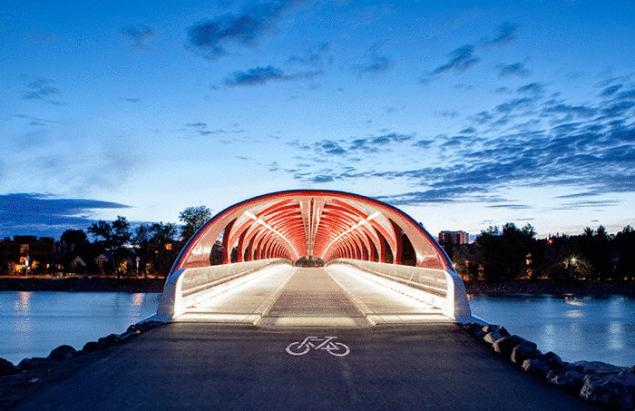
Many wonderful objects in nature is fractals. You are using fractal geometry?
— I once met a mathematician named Benoit Mandelbrot received several prestigious awards for the study of fractals. The most beautiful in fractal geometry, it's that she's from the point of view of mathematics to describe all these forms, all these logarithmic spirals that occur in cavities, trees and other plants due to growth of the rules that they follow. It is very, very special laws of growth, shape appearance, progression and expansion. Fractal geometry tends to create their mathematical model. It's fascinating stuff.
"As beings we should be random with all possible humility to admit that things really can't be perfect. In addition, I believe that "imperfection" also sometimes means "sincerity", which can be seen in children"
I myself have never used such a geometry. I'm more of a pure form. Geometric beginning always prevails, it controls the situation. So the process of shaping the building must be cleansed and get him to tone through the use of pure geometric shapes: cones, cubes, polyhedra or even surfaces lined with a special way, but always meet the clear mathematical laws. This allows you to seek control over the form, regardless of how free it can be to control the context.
When you make a model of a building, again, only for reasons of control and the desire to give it rhythm, you need to enter the context where the number, in principle, play an important role, and relate them to the human body. For example, the door should be 2 feet 10 inches in height and 1 meter 70 centimeters in width — as the person with open hands. The height of table, chair, railing or window — all to be translated into a numerical system that corresponds with the person. I find it beautiful and largely associated with the classics.
Fibonacci numbers is one of the perfect numeric sequence. But there are others — based on the square root of two or square root of three. The Arab world, for example — with all the beauty of the Alhambra — should the parameters of the angle of 45 degrees: the parameters of the square root of two. These buildings are spread around a sense of order, confidence and peace. Art is peace in its purest state.
But even though we know so much perfect mathematical sequence, the perfection of form we could ever get.
— Exactly. I think perfection is unattainable. It seeks only God. Only the idea of God, which we have aimed to absolute perfection. In the world there is no perfect things. It's like: you think it symmetrically, but no. One half is not like the other, some lines are not straight. This imperfection is character. And we are sensitive to such things. We need to strive for perfection, but to do it, knowing that we will never reach. The pursuit of perfection, the blind desire, from my point of view, is the main school. All great artists: Caravaggio, Michelangelo, Cezanne, just worked, worked and worked. Thinking that you need to Express something, never hesitate, they just continued to work. But even that they managed to do is full of mistakes: if you look at the work of Cezanne, you will see a lot of imperfections, some things even seem amateurish. However, the beauty arises from them. It appears from the intention of the artist to convey the best in themselves.
— The disadvantages are also important.
— Yes, it is human beauty, which appears not only on the basis of perfect classical canons, but due to small defects: spots on the skin or in the nose, small bumps and so on. This is what gives a person vitality. As accidental beings, we should with all possible humility to admit that things really can't be perfect. In addition, I believe that "imperfection" also sometimes means "sincerity", which can be seen in children. When they paint, they do it incredibly sincere, and it reflects themselves as they are immersed in drawing very deep. On the other hand, if someone will compare these pictures with the wizard, he will say: they are imperfect, quite the contrary. But this work is very high quality, because it reflects sincerity, and in this sense, a certain imperfection is welcome.
If to speak about art and related desires, I'd like to learn something new, but quite the contrary: to return to childhood and once again see the world as naive and innocent. I would like to enjoy every day just as happy then. Wake up with this. I think artists reach a transcendent level in this sense. The conductor or the performer after the concert, despite the fact that he knows what and where could be improved, feels satisfaction from the fact that I could cause people's feelings, to convey some spiritual message. I think it's important in architecture.
— You had a good childhood?
— Yes, I sometimes tell my kids that they had a good childhood, but at me it was better! My family was very affectionate. I had older brothers, adults were concerned that I received a good education. Sea, city, father, mother, brothers, cousins, school, the environment was very constructive. Such an environment for life gives a boost of confidence to other people. Of trust to the world, because of which you are constantly trying to see everything in such a positive light in what is possible.
— What would you say to those who trust lost?
I think it's important to understand that every second is unique and is a great gift. Good luck — to be able to live and enjoy the time, despite all the difficulties. In fact, the concept of perfection and so we have inside us. I had a Geology lecturer, who said: "Everything in the world is made of crystals." Crystals are ultra-clean geometric shapes. Even clay and mud — the crystals: it is enough to consider them under an electron microscope to see it. In the circumstances of any nature, if you search using their sense of beauty, also have the opportunity to open for yourself and others something beautiful.
Source: theoryandpractice.ru



